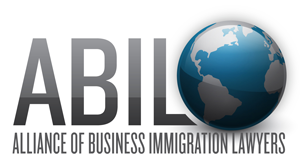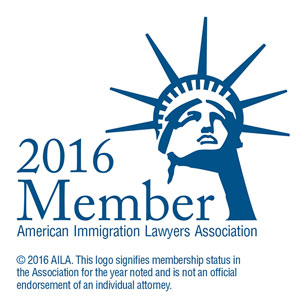THE SUPERVISED RECRUITMENT ROLLER COASTER -THE RIDE THUS FAR
You filed a spotless labor certification. It was a perfect case, a perfect employer and a perfect employee with the perfect qualifications. Yet, one day, there it was in the mail. The dreaded Notification of Supervised Recruitment (“NSR”). The Department of Labor (“DOL”) had long advised to expect increased Supervised Recruitment. You knew the possibility of receiving an NSR existed and had advised your client accordingly. Still, its arrival was disappointing. Initial indignation (“How dare they?”) gave way to resignation (“Oh well, that’s just the way the cookie crumbles.”) to actual enthusiasm (“Hey, this will give me chance to finally see what this crazy process is about!”). And so, assuring your client that all will be well, you took their hand and boarded the Supervised Recruitment roller coaster.
The DOL is authorized, under 20 C.F.R. § 656.21, to conduct Supervised Recruitment. The article by Cyrus Mehta, Maggie Murphy and David Ware, Supervised Recruitments in Tough Economic Times – Practical Tips For Compliance quoted Solicitor of Labor Gregory F. Jacob who said, “Supervised Recruitment is one of many tools the [Department of Labor] uses to safeguard the integrity of the permanent labor certification process and protect job opportunities for American workers. The department takes seriously its statutory responsibility to ensure that American workers have access to jobs they are qualified and willing to do.” This article also indicated that the DOL will target employers in industries with publicized layoffs in specific geographic locations, e.g. employers in the financial industry in New York City. The DOL may also target employers in the computer and auto industries. The DOL has begun to make good on its threat to increase Supervised Recruitment and like most practitioners, I am currently in the middle of the Supervised Recruitment process, with no telling where this ride will take me next. Based on experiences thus far, here is some of what can be expected.
Requests for extension may/may not be granted
The NSR describes the steps involved in the Supervised Recruitment process and gives the employer 30 calendar days, from the date of the NSR, to submit a draft advertisement and any additional information requested in the NSR. The NSR also indicates that the employer may submit a timely request for one extension of the 30-day timeframe by e-mailing the DOL at SR.processing@dol.gov. A good reason for an extension would be that you are a new attorney of record. However, the employer cannot rely on the mere timely submission of an extension request. The request must be officially granted. The problem is that the DOL may respond within 1-2 days; may take longer than a week to respond; or may not respond! Moreover, there is also no guarantee that the response will be favorable. Because of this uncertainty, it is best to begin to prepare a response to the NSR which can be timely filed in the event that no response from the DOL has been received.
The requirements for the advertisement are different
The NSR lists the required content for advertisements. One immediately becomes aware that the rules under Supervised Recruitment are different from the PERM rules. Under Supervised Recruitment, the advertisement must contain the job title; the job duties; the work schedule; the education and experience requirements; the geographic location(s) of employment; the Kellogg language, “Any suitable combination of education, training or experience is acceptable;” the offered wage; and a list of any training to be provided to employees. The advertisement must direct applicants to submit their applications to the DOL’s Recruitment and Employment Office.
The NSR may also request additional documentation. For example, the DOL may require the employer to “explain any limitations on training…with regard to [the offered] position.” The DOL does not clarify what is meant by this request but asks that the employer note that a worker is able and qualified for the job opportunity if the worker can acquire the skills necessary to perform the duties involved in the occupation during a reasonable period of on-the-job training.
Requests for additional information
Once the draft advertisement has been submitted, the DOL may request additional information. For example, a draft ad requesting that applicants “must be willing to work in unanticipated locations across the US” may elicit a request that the employer establish the business necessity for this requirement. The employer will be given 30 calendar days from the date of the request within which to submit its response.
Making changes to the ad after it has been submitted
Once the draft advertisement has been submitted, it may be possible to make amendments to the ad by e-mailing the DOL. For instance, in one case, after the draft advertisement had been submitted to the DOL, the employer asked whether it could indicate that there were multiple, identical positions available within the company. The DOL responded favorably to an e-mail inquiry requiring only that the specific number of positions be indicated. However, it may not be possible to make a drastic amendment to the advertisement from what was stated in the PERM form.
Issues with recruitment
Once the employer’s draft advertisement has been approved, the DOL will issue its Recruitment Instructions. The Recruitment Instructions are specific instructions informing the employer where and when the advertisement must run. Again, here, the recruitment process will differ from what is required under PERM. For example, for a professional position, the DOL may require that a 30-day job order be placed with the State Workforce Agency (SWA); that the ad run in a specific major newspaper and online for 3 consecutive days including a Sunday; that the ad run on the employer’s website for 7 consecutive days; that the ad run on 2 other websites for 7 consecutive days; and that the employer post the Notice of Filing for 10 consecutive business days. All of the recruitment must commence within 15 days of the date of the Recruitment Instructions notification.
The problem is, sometimes, it takes several days for the Recruitment Instructions notification to arrive in the mail. By the time the instructions arrive, the employer may only have 10 days left of the initial 15 days. Then, the employer may encounter problems with some of the recruitment steps. For instance, depending on the particular SWA, it may take up to 7 days to post the job order. To make matters worse, some SWAs may edit the posting (e.g. directing that applications be sent to the employer’s headquarters). Some SWAs are notorious for randomly editing the job order even after it has been posted for a few days. The word “sabotage” inevitably comes to mind but I digress. It is important to constantly and painstakingly check the contents of the job order.
Sometimes, the DOL will instruct that the advertisement be placed in the most expensive newspaper of general circulation. For instance, the DOL may instruct that an advertisement for a professional position in Edison, New Jersey, run for 3 consecutive days including a Sunday in the New York Times when the New Jersey Star Ledger is a perfectly appropriate and less expensive newspaper. Considering the extensive requirements for the advertisement (discussed above), it may cost several thousand dollars to run the ad in the newspaper. Of course, the employer may e-mail the DOL to request a change of newspaper. But again, the DOL may respond in 1-2 days, may take a long time to respond or may never respond. Oftentimes, the employer is forced to simply pay the advertising fees.
The employer is required to e-mail a recruitment schedule to the DOL, no later than 15 days after the last placed advertisement.
Resumes
The DOL will not wait to gather any number of resumes but will forward them to the employer as they are received. In some cases, the resumes will only be sent to the attorney and in other cases, the attorney will only be cc’d on the communication. If an attorney receives a resume, it is important that this be forwarded to the employer immediately upon receipt so that it can be appropriately evaluated. Also, it is important that the attorney not evaluate the resume before the employer does. Remember the DOL insists that the employer first consider a US worker applicant and not the attorney. Employers are also required to consider any resumes that may be sent directly to them.
Expected next steps are that the DOL will issue its request for the final written Recruitment Report and will issue a determination whether to grant or deny the application.
I am sure that practitioners can provide countless anecdotes on their experiences with Supervised Recruitment. The only thing I think we can count on is that Supervised Recruitment is not going away. Stay tuned for more highlights from this journey that I have just embarked upon.





